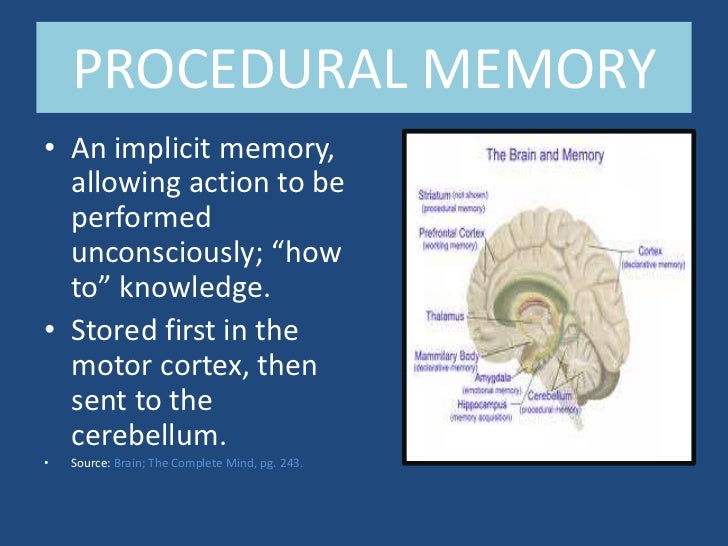

Implicit memories involve reptilian and limbic brain centers, specifically the amygdala. We have two types of memories, implicit and explicit. This area allows us to be self-reflective about our emotional or somatic experience and inhibits unnecessary stress reactions. The most recently evolved area of the brain is the neocortex and more specifically, a portion called the prefrontal cortex. This process is called consolidations and involves linking sensory components of a memory into the association cortex so that the sounds are held in the auditory context, scents in the olfactory cortex, and so forth. This brain structure helps the brain place specific memories within the context of thousands of other previous life experiences. In contrast, the hippocampus is essential in long-term memory for facts. Hormones and neurotransmitters initiate a cascade of responses leading to a whole-body experience of fear related sensations and emotions.

The hypothalamus initiates a set of actions in the endocrine system to release hormones and engage the body’s stress related responses. The amygdala acts as a warning system for the brain and body by scanning the environment for potential danger and relaying this information to the hypothalamus. The amygdala is primarily responsible for the emotional content of memories. Within the limbic system, the amygdala and hippocampus work in conjunction with each other for memory encoding and retrieval however, they have very different roles. The middle area of the brain is called the limbic system which provides the neural basis for memories and emotions. These centers reflexively respond to fearful events and stimuli with a startle response, increased heart rate, quickened breath, and increased muscle tension. The lowest brain centers, sometimes referred to as the reptilian brain, are involved with activating defensive stress reactions. The lowest brain centers hold our most primitive survival reactions and the upper brain centers serve a regulating and reflective purpose. The brain develops hierarchically from the bottom up and the inside out. A physiological explanation of traumatic memory can provide a foundation for increased self-acceptance and compassion.” This process can evoke feelings of shame and self-doubt. This can lead to strong emotions and body sensations without a well-developed ability to explain your experience with words. “Memories of physical or sexual abuse are held within portions of the brain highly sensitized to stress hormones.

However, even memories with missing elements can still be vividly recalled with fragments of images and highly disturbing somatic sensations. As a result, there may be portions of a traumatic memory that are unclear or forgotten. Times of extreme stress such as traumatic events can impair how memory is stored and subsequently recalled.


 0 kommentar(er)
0 kommentar(er)
